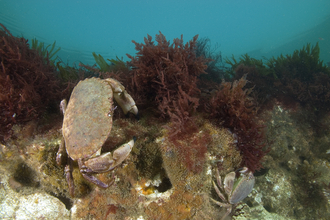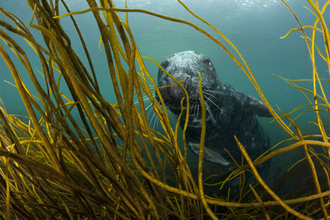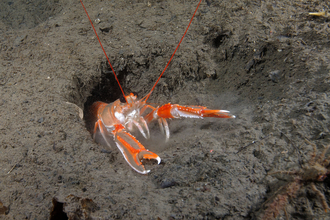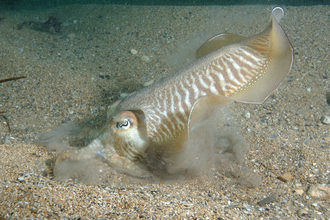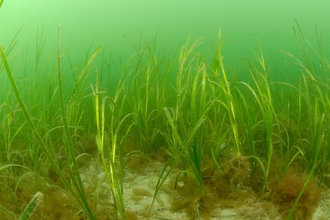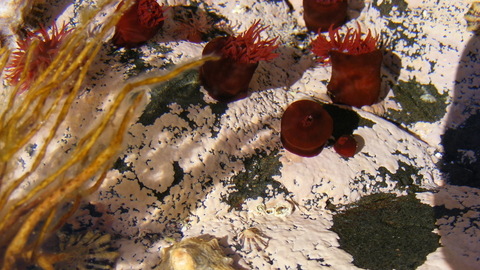
Rockpool anemones ©Anna Guthrie
Rocky reefs
What is it?
Rocky reefs are outcrops of rock that are either permanently or periodically submerged beneath the water. The variety of shapes found on rocky reefs, from boulder to cracks and canyons, make them fascinating habitats that are rich in life.
Beneath the waves, rocky reefs offer a hard surface for marine life to attach to, supporting extensive communities of animals and algae. In the intertidal zone, where shoreline rocks are submerged at high tide but exposed to the air at low tide, they offer sanctuary to the wildlife living in this stressful environment.
Why is it like this?
Rocky reefs are formed by erosion. The relentless force of water hitting the rock gradually wears it down, creating the maze of cracks and holes that are so attractive to marine wildlife. Different rock types weather in different ways. Softer rocks, such as limestone or chalk, can hold boring species that drill their own holes into the rock face.
The constant disturbance by physical factors like wave action, as well as the activity of large, grazing predators like sea urchins, is what makes rocky reefs such dynamic environments. Waves and grazing clear bare patches of rock, triggering a race for new creatures to colonise the valuable free space.
Distribution in the UK
Rocky reefs are widespread around UK coasts, though different types of rock can be found in different regions. Chalk reefs are found in parts of southern Britain and off the East Coast.
What to look for
Life on a rocky shore is found in distinct zones. On the upper shore, which is only underwater for a few hours over high tide, tougher creatures dominate. Look for limpets, barnacles and sea snails attached to the rock. Few seaweeds can tolerate this much exposure to sunlight and high temperatures.
Farther down the shore the rocks spend less time exposed to the air, so conditions aren't as harsh and competition for space is more fierce. Brown seaweeds like bladderwrack cover the rock, and shaded pools hold blennies and other small fish. Shore crabs lurk under boulders and dog whelks, a type of predatory snail, can often be found hunting barnacles.
The lower shore is covered by water for most of the day, and the stable conditions mean an even greater variety of wildlife can be found. Kelp begins to occur here, as well as red algae like carrageen. An increase in seaweed diversity attracts more grazing animals, like blue-rayed limpets and topshells.
Below the limit of the low tide, in the subtidal zone, rocky reefs are never exposed to the air and provide a home for species that can't survive the stressful conditions of the intertidal zone. Fish are commonly found here.
Conservation
The main threat to rocky reefs below the tideline is physical disturbance from fishing gear and boat anchors, which damage the wildlife living on the rock.
The intertidal rocky habitats of the shoreline are vulnerable to disturbance from curious beachgoers. Many interesting animals can be found on rocky shores and in rock pools, making them great places to explore. But this is a harsh environment, and each species will have found a special spot to meet its needs. Always make sure these creatures are left in the same location they were found in, and put rocks back where they were found as well - lots of animals will be sheltering under them.
The Wildlife Trusts are calling for nature's recovery at sea. You can help by pledging your support and becoming a Friend of Marine Conservation Zones.

